Do you need ideas to…
- increase reciprocity?
- encourage your students to ask follow-up questions with peers?
- have your students ask follow up questions and respond with more than ”oh”?
- have your students engage in multiple meaningful conversational turns?
- have your students comment or ask questions based on others’ answers – besides “that’s nice”?
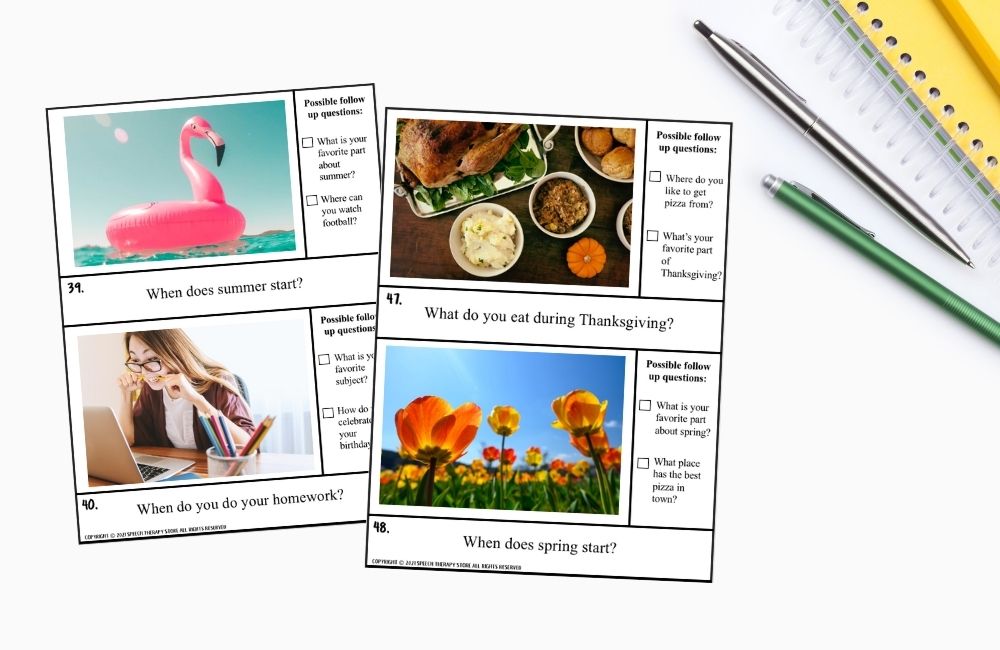
#1 – Using Interesting Teen Questions and Pre-created Follow-Up Questions
When practicing follow up questions in a structured setting. Have your students create a question along with possible follow up questions they could ask ahead of time in order to practice creating 2-3 questions during a structured practice.
This will help your students get in the process of thinking of additional questions they could ask in a script form to help increase additional questions during unstructured conversations.
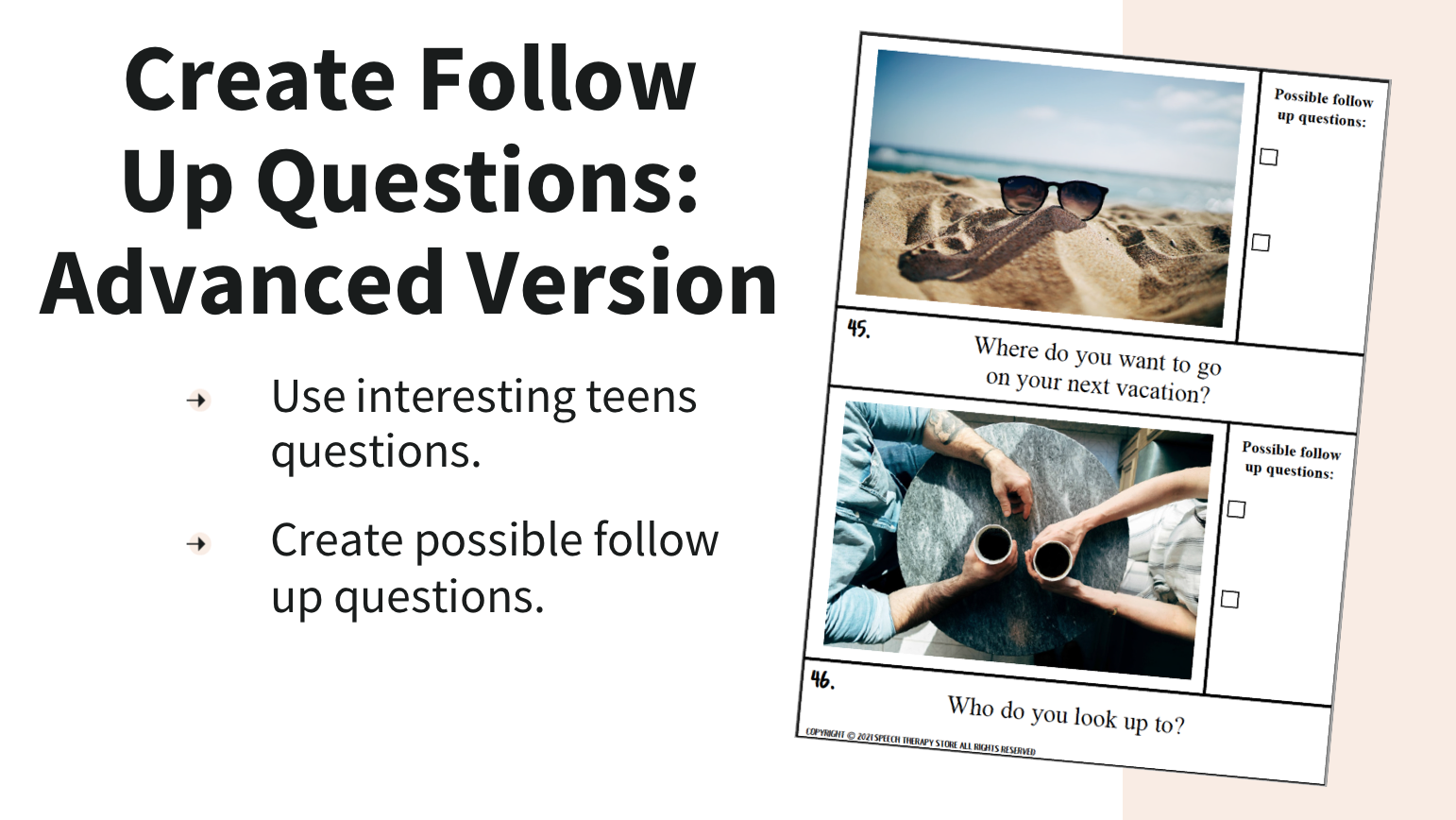
If your students still struggle to create possible follow up questions they could ask ahead of time then you could modify the previous example to provide your student with one correct and one incorrect possible follow up question.
That way they are showing they know what’s a good versus a poor follow up question.
Then practice using the correct answer in a practiced conversation.
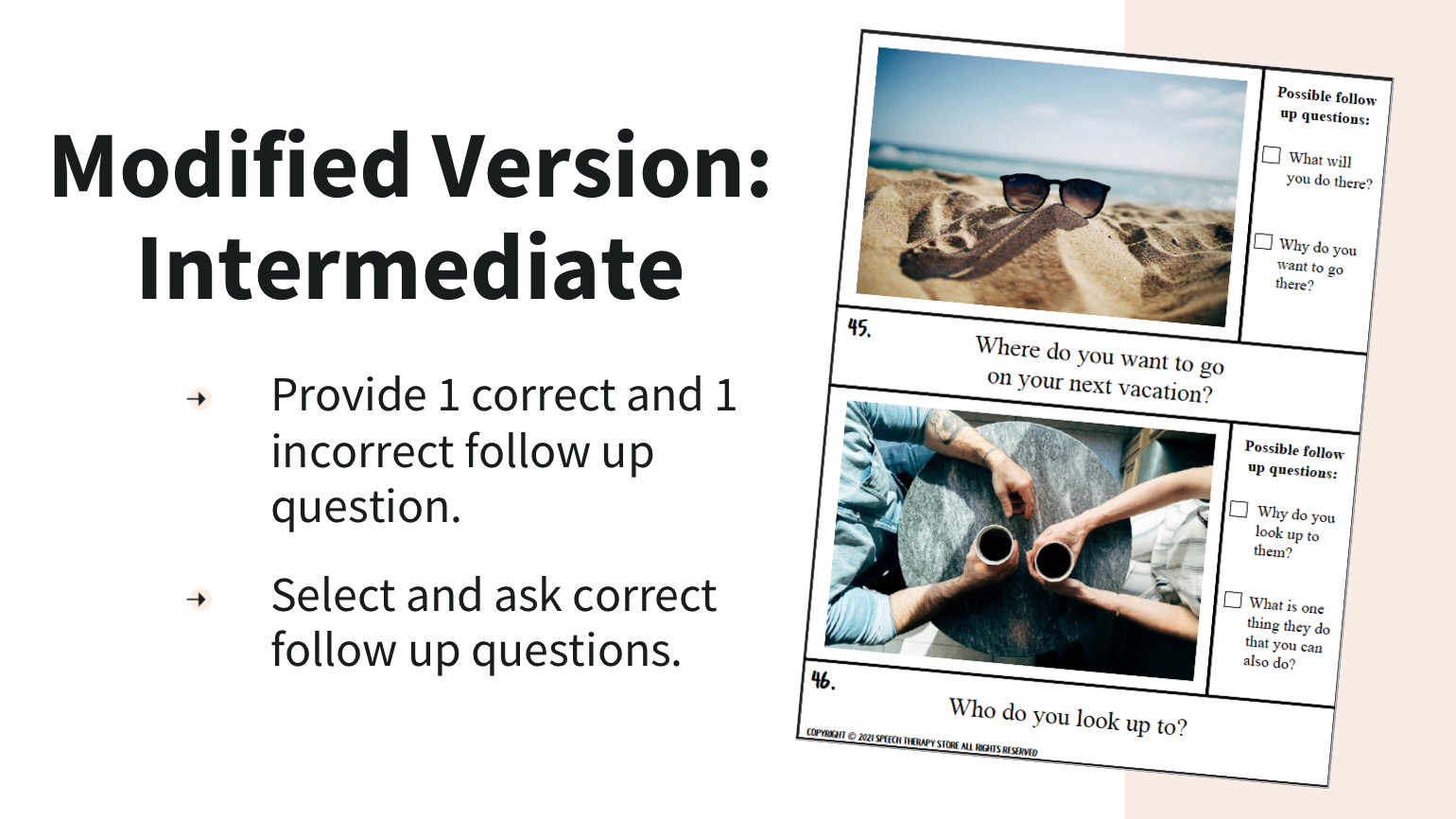
If your students still struggle to select the one correct and one incorrect possible follow up question.
Then you could provide them with 2 possible correct answers to simply practice using the given follow up questions in a practice conversation.
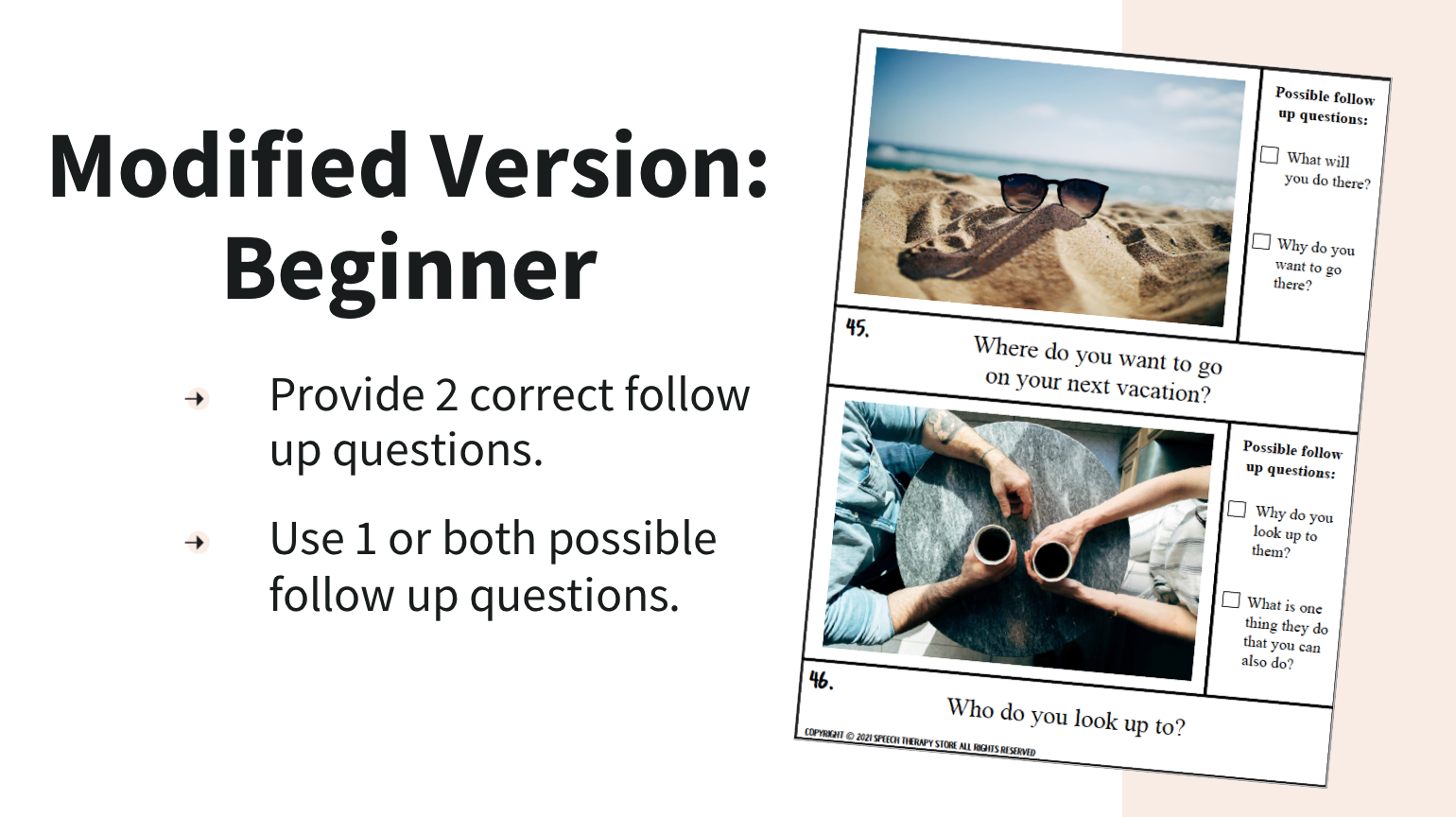
#2 – Using Short Video Clips to
Practice Asking Follow-Up Questions
Another fun idea my students have enjoyed is using a short video clip.
First I give the students some background information about the video and then have them practice thinking of two possible follow up questions that they would ask if they were having an actual conversation with the person in the video.
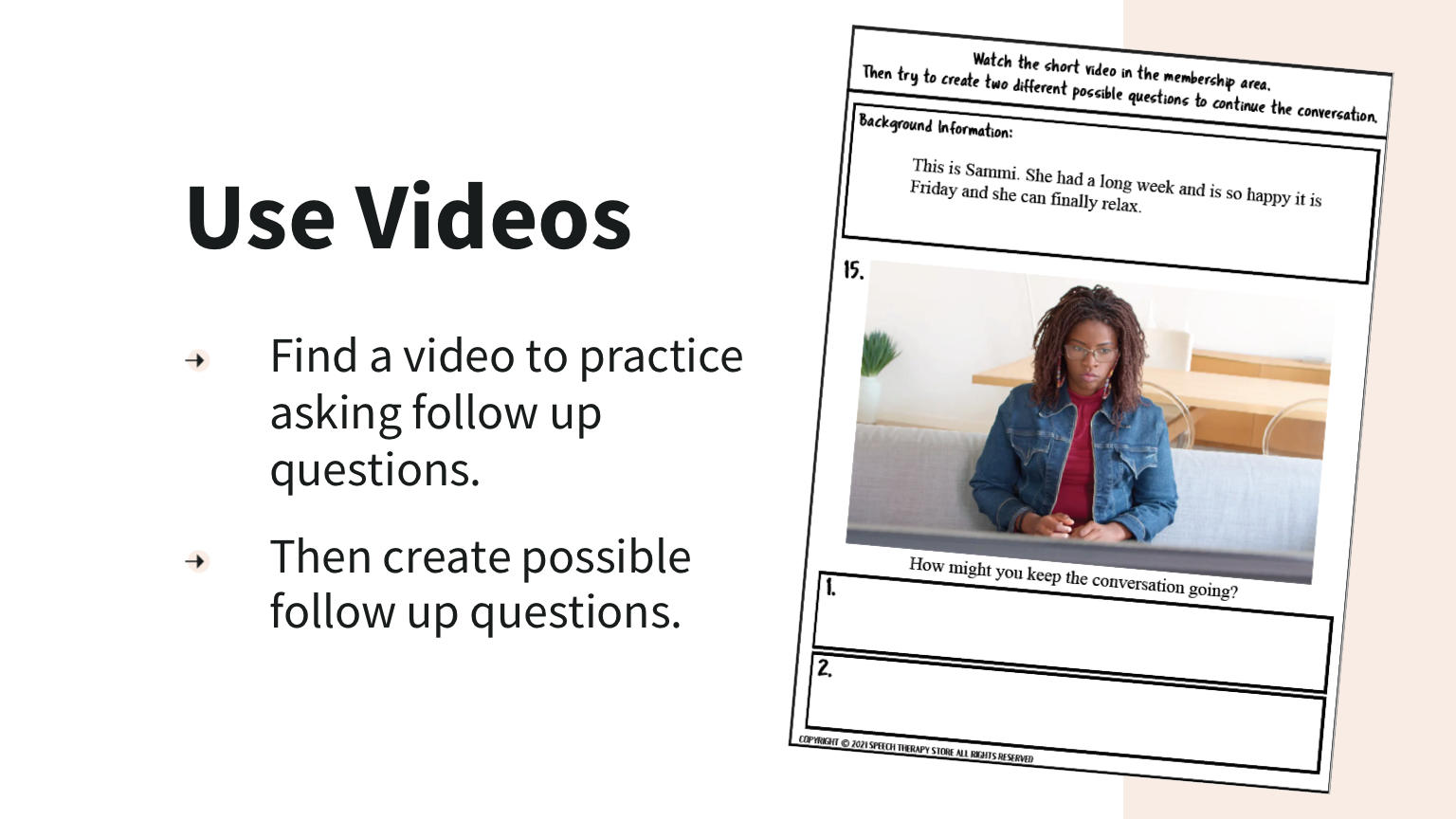
#3 – Using Colored Cards to Practice Asking Follow-Up Questions
This strategy is probably one of my most favorite strategies.
First I start by assigning or letting the students pick a colored item.
This can be anything from colored index cards, to colored blocks, or colored legos. I typically used the colored blocks.
I then give each student a number of blocks in their individual color. In the pictured example below, each student was given 4 colored blocks and a topic of conversation about the ocean.
The blue student initiated the conversation and then the orange student made a follow up comment and then blue responded.
As you can see blue used all 4 of their blocks and yellow has used two, orange one, and green hasn’t even made a comment or asked a question yet.
I love this visual representation for two reasons. One it gives a visual representation about who is talking, who isn’t talking, and who is doing a good balance.
Then if we were to do another around I might give each student the same amount of blocks again and give everyone a gentle reminder to take turns and share the conversation and see how it goes.
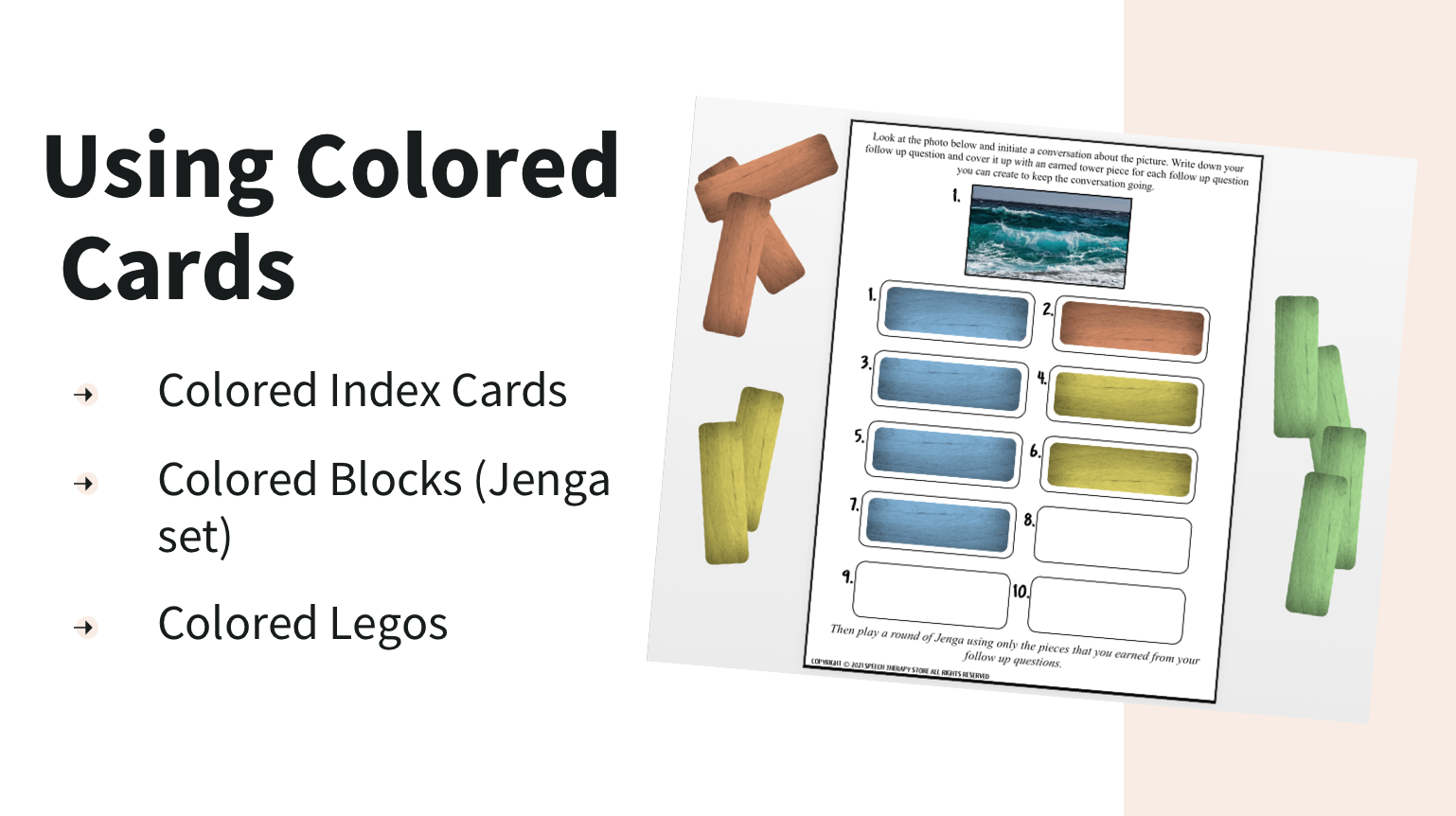
Some ways to modify the game are to give each student a different number of blocks.
For example, using this same group given a different talk topic I could give green 4 blocks, blue 2 blocks, yellow 3 blocks, and orange 4 blocks and have green initiate the conversation this time.
I then tell students when your blocks are gone you can’t talk again and everyone else has to use their remaining blocks before we set up and do another round.
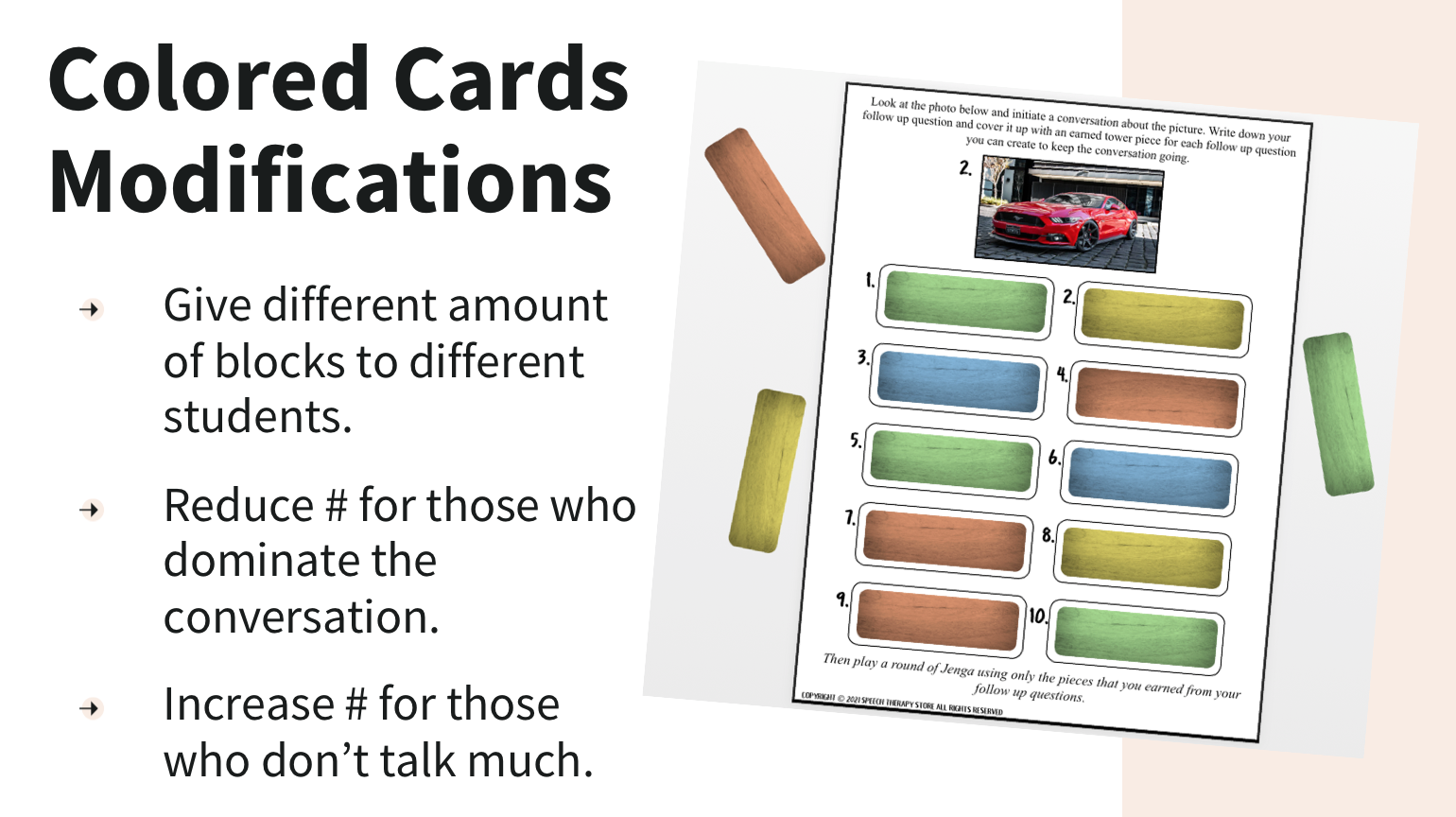
Then if we were to do another around I might give each student the same amount of blocks again and give everyone a gentle reminder to take turns and share the conversation and see how it goes.
Having a visual representation of the conversation really helps your students to visually see how they are contributing to a conversation.
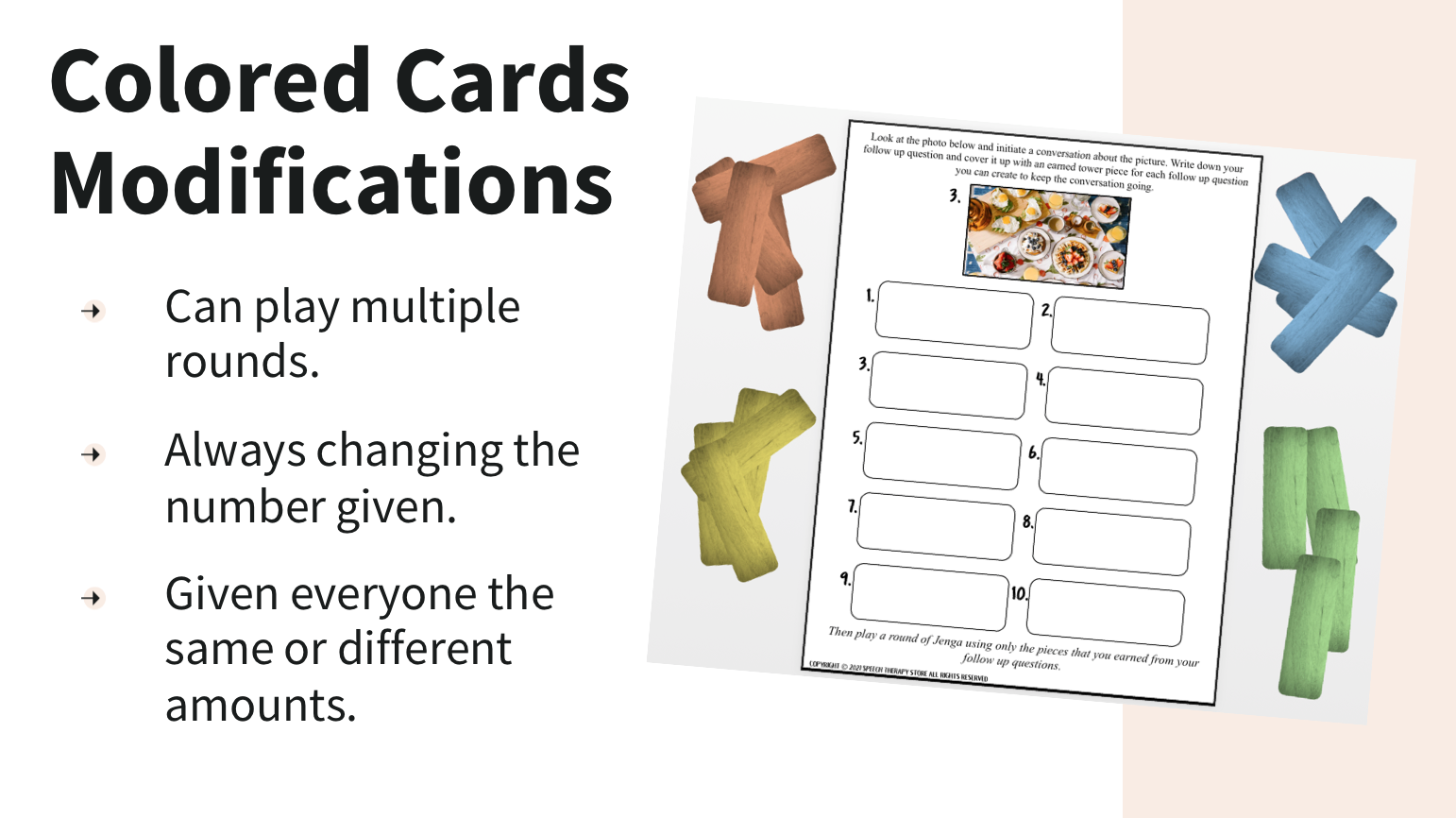
#4 – Using a Timer to Encourage Asking Follow-Up Questions
To keep my students talking for multiple exchanges one trick I’ve used is setting a visual timer for random amounts of time and then having my students continue the conversation until the timer runs out.
This helps to increase my students follow up questions in order to continue talking until the timer goes off.
In this lesson I’ve added a note to set a timer for the first question “Are video games too violent for teenagers?” at 2 minutes.
This encourages my students to continue the conversation for 2 minutes.
The second example question is, “Should students still have to learn cursive?” and for this question I have the students set the timer for 1 minute.
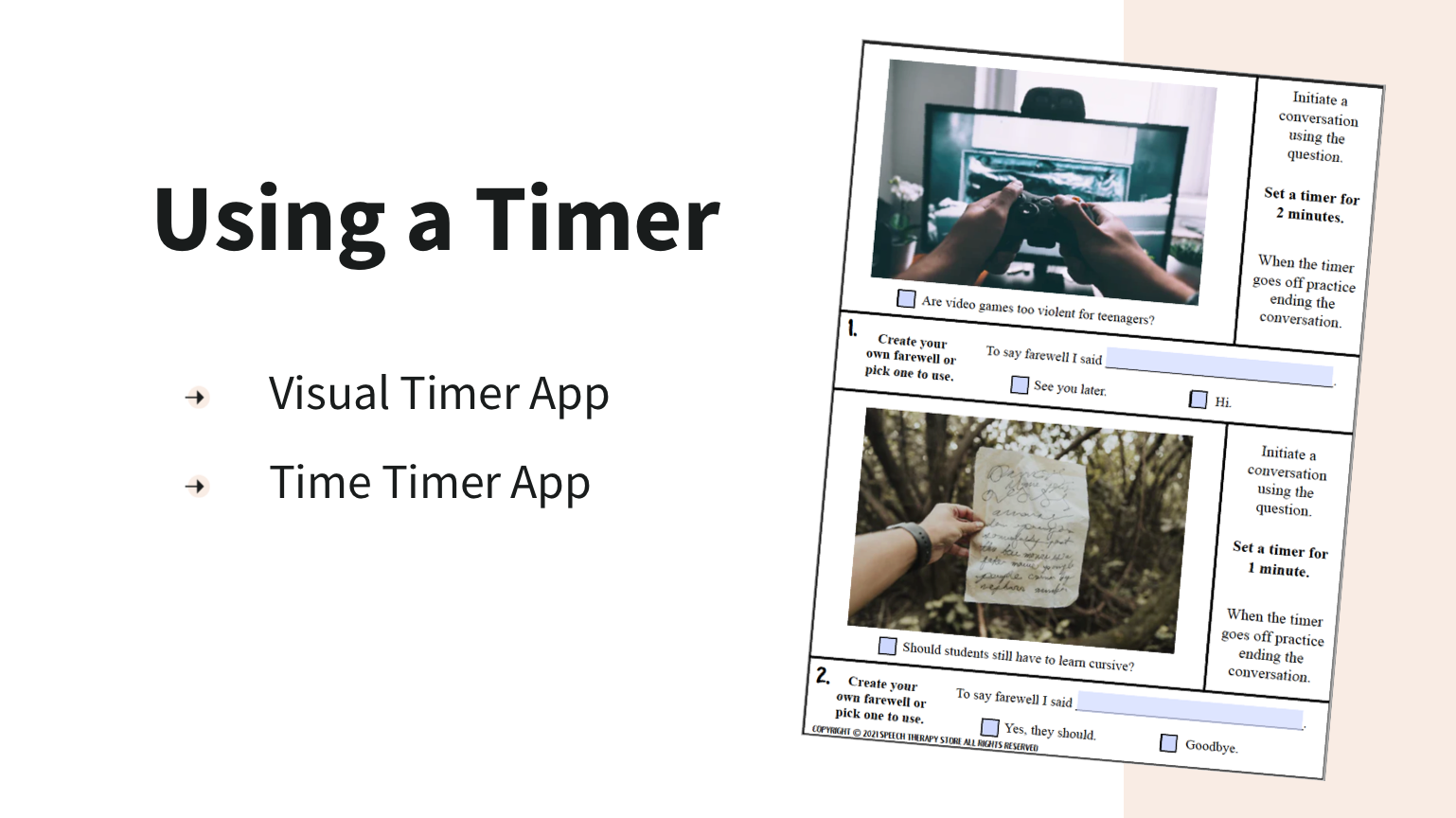
Wish You Could Find Materials Like These Already Made For YOU?
Are you thinking I’m loving all these ideas, but who has time to implement and create all these materials?
I just wish you would do it all for me!

When you envision this school year what if I told you that you could have your entire year of Conversational Skills Lesson planning for your Middle and High School students done for you using a laid out for you lesson plan?
Well then you’re dreams have come true, because I’ve got a surprise for you. Click the link below to learn more.
<<CLICK HERE TO LEARN MORE!>>
An entire years worth of lesson planning done for you for Middle and High School aged students working on Conversational Skills. Plus there’s a bonus, or two, or three. Be sure to click the link above to see more.
In Conclusion if you Need Ideas to…
help your students maintain a conversation by using follow-up questions when practicing conversational skills with their peers. Here are a few ideas to try.
- #1 – Use Interesting Teen Questions and Pre-Created Questions
- #2 – Use Short Video Clips
- #3 – Using Colored Cards as a Visual
- #4 – Use a Timer
Which idea is your favorite?
<<SAVE YOUR FAVORITE PIN!>>
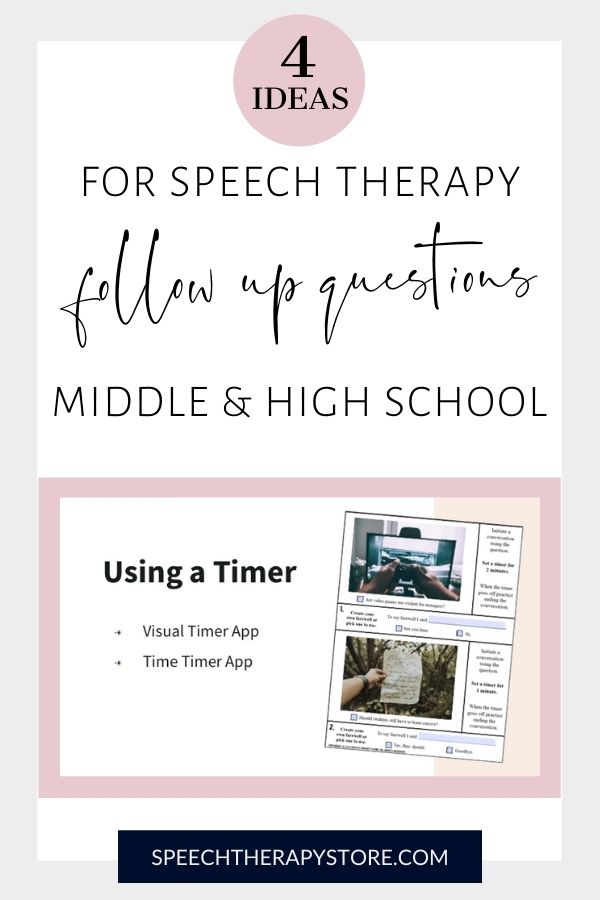
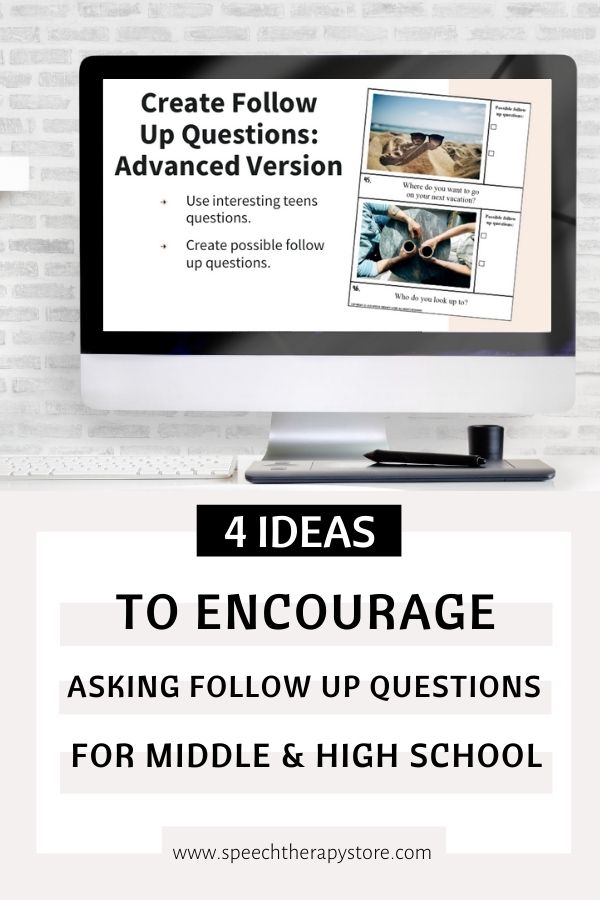
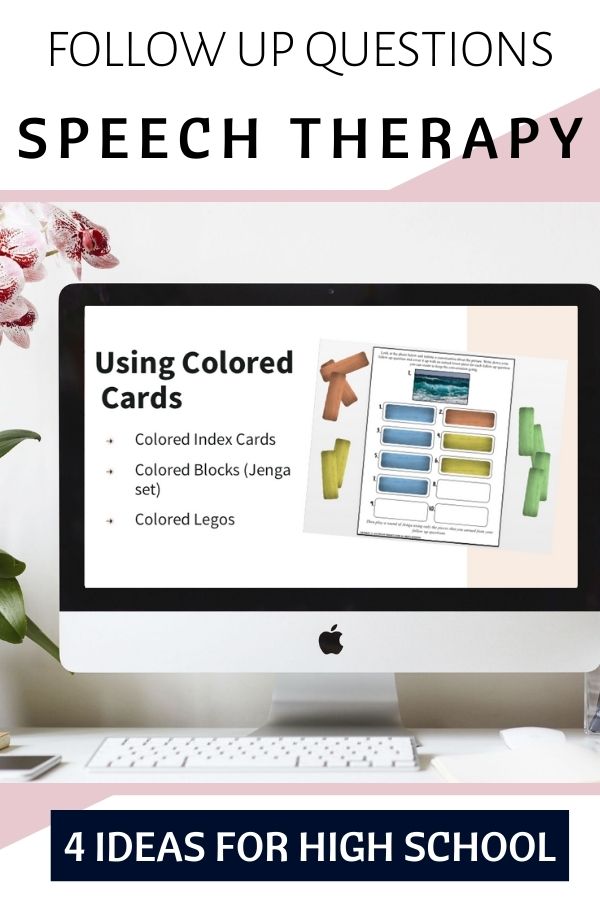
Need More Speech Therapy Ideas and Materials
Be sure to check out the following topics for more ideas!
